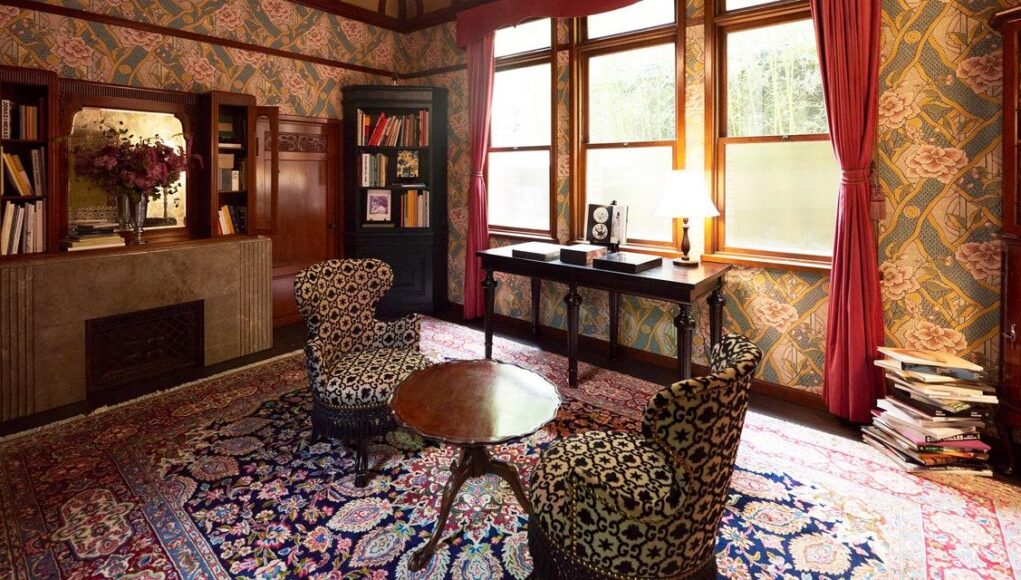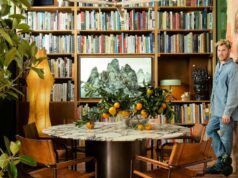For the last two weeks, all eyes have been on Tokyo’s new Kengo Kuma–designed Olympic Stadium, where a global symphony of culture, athleticism, and community has united the world. Like much of Kuma’s commanding yet sustainable structures, the wood-heavy venue is in part an homage to traditional Japanese design, which prizes harmony between humankind and nature. Nowhere is this long-standing aesthetic value more evident than in Kyoto, an ancient city whose humble structures continue to draw tourists and tastemakers alike. And now, Gucci has become the latest company to embrace the city’s myriad charms and astounding architecture with its recently opened “Gucci in Kyoto” project.
Calling Kyoto “Japan’s sister city to Florence”—the latter being where Gucci was founded—the Italian company chose to continue its 100th anniversary celebration in the island nation with multiple events. Gucci first staged fashion, jewelry, and timepiece presentations at two local temples (both UNESCO World Heritage sites): Kiyomizu-dera and Ninna-ji. And from now until August 15, the public can also join in the festivities by visiting the Gucci Bamboo House, a pop-up experience flanking Gucci’s iconic Bamboo handbags.
A serene garden moment.
For the exhibition, Gucci renovated a machiya—a Japanese traditional wooden townhouse typically inhabited by merchants and craftsmen—formerly known as the Kawasaki Residence. Though these homes have existed since the Heian period, this building was constructed during the Taishō era of the 1920s (the same period as Gucci’s founding).
According to Japan Property Central, the townhouse, located in central Kyoto, has fashion in its bones: It was originally built for a wealthy cotton merchant, and after selling to the Kawasaki family, it ultimately served as a kimono museum. Despite its current designation as a Cultural Property of Kyoto City, the house risked demolition just two years ago. However, Gucci has since been able to supply additional funding.
A floral still life.
Buy now for unlimited access and all of the benefits that only members get to experience.
The structure was known for its mix of Eastern and Western architectural features, a juxtaposition that Gucci creative director Alessandro Michele has explored in the company’s products. The Gucci Bamboo House follows the basic structure of a machiya: It is long and narrow with an enclosed courtyard that in this instance abounds with natural bamboo. Minimalist design has been preserved in some spaces, such as the tatami-floored Tea Ceremony Room, rebuilt under the supervision of tea master Sokyu Nara. Other areas have been given the eclectic Gucci treatment—most notably the library, where patterned chairs and a curated book selection are set against Gucci floral wallpaper.
Other details include a Sho artwork by calligraphy artist Shisyu and shoji-paper panels adorned with the Gucci monogram. Large-scale sculptural artworks by contemporary bamboo artist Tanabe Chikuunsai IV serve as a complementary backdrop for a spectrum of Bamboo handbags, which the brand first introduced in 1947. Also on view are updated versions of the Diana handbag, a vintage design from the 1990s that Gucci recently reissued with bamboo handles and removable neon leather belts.
With several months left in its anniversary year, there’s no telling which artful city or historic landmark Gucci will pop up in next. Given Alessandro Michele’s endless imagination and flair for reinvention, anything is possible.








